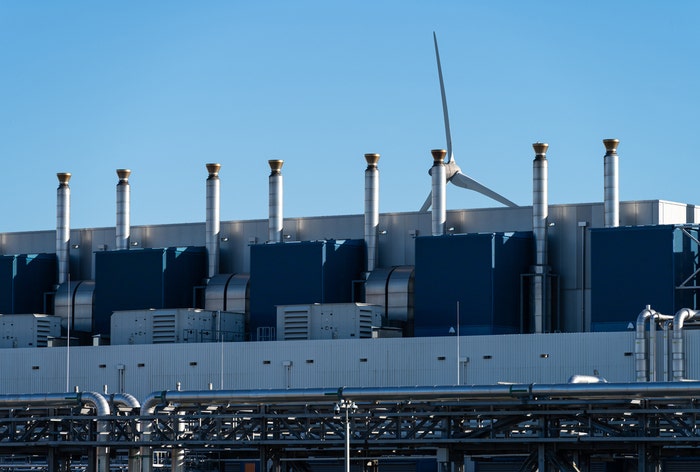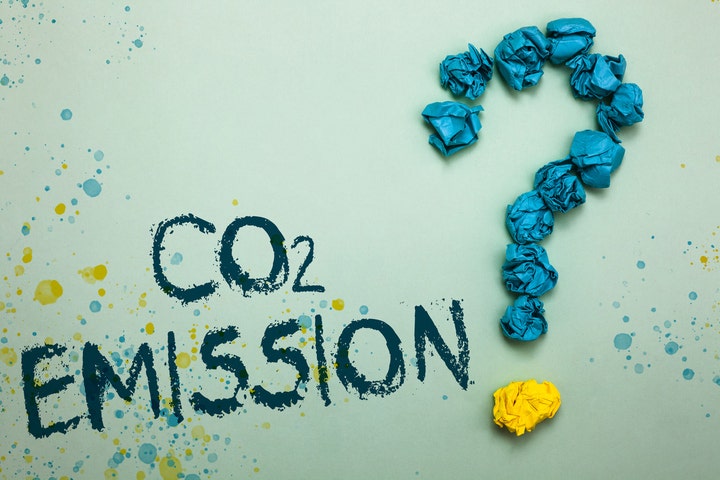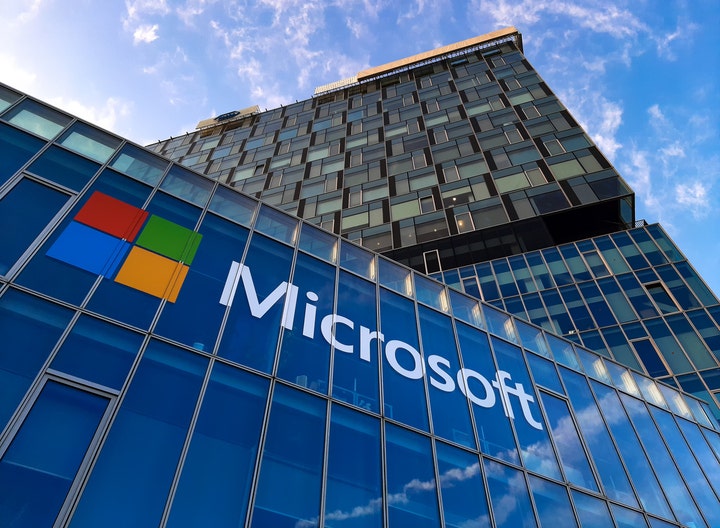AWS V Microsoft Azure: Which is the most sustainable cloud platform?
Our end user sister site Computing looked at the sustainability claims of the hyperscalers

Our collective need for data has an environmental cost, and awareness of that fact has grown sharply over the last 18 months.
CRN end user sister site Computing has conducted research into the sustainability credentials of the three hyperscale cloud giants. The details and methodology of this research can be found here, and the most recent comparison of AWS to GCP can be found here .
In the second of this years' series we compare the two companies that dominate the market for cloud services. AWS remains the most widely used cloud platform with a market share of around 34 per cent. Microsoft Azure holds a 21 per cent market share.
Last year, Computing reported a yawning gulf in the sustainability standards, emissions, circular economy and transparency between the two companies. Has this gap grown larger or smaller in the meantime?
Amazon Web Services v Microsoft Azure: At a glance
Criteria |
AWS |
Microsoft Azure |
|---|---|---|
| Standards & Policies /16 | 7 | 15 |
| Energy/Emissions/Water /23 | 9 | 10 |
| Waste/Circular Economy/Recycling /8 | 3 | 6 |
| Transparency /13 | 1 | 10 |
Total /60 | 20 | 41 |
Standards & Policies: A clear win for Microsoft, which were it not for recently falling out of ISO14001 compliance would have scored full marks. Microsoft was asked for comment about whether the recertification process was underway but chose not to provide any data over that already publicly available. AWS scores only 7 points, reflecting less ambitious sustainability targets for not only Amazon itself, but also its suppliers and customers.
Energy/Emissions/Water: Both companies score almost equally badly here, with Microsoft beating Amazon by a single point. Both companies are emitting approximately a fifth more CO2 than they did in 2020. Amazon picks up points on renewable energy projects, datacentre innovation and sustainable commuting initiatives. Microsoft scores better in sustainable office building, sustainable certifications, energy efficiency and cooling research.
Waste/Circular Economy/Recycling: Microsoft's score is double that of Amazon, primarily because it actually provides basic data on waste volumes and refurbishment rates.
Transparency: A thumping win for Microsoft which, on the whole, provides clear, accessible data and has tried hard not to undercount scope 3 emissions. AWS manages a single point for including upstream scope 3 emissions but overall provides very little data in its lengthy ESG report.
AWS V Microsoft Azure: Which is the most sustainable cloud platform?
Our end user sister site Computing looked at the sustainability claims of the hyperscalers

Amazon Web Services v Microsoft Azure: Standards & Policies
Standards and Policies criteria exist to provide clarity for customers, and potential customers, about the standards cloud providers have signed up to.
Criteria |
Possible score |
AWS |
Microsft Azure |
|---|---|---|---|
| ISO14001 Certification | 1 | 0 | 0 |
| Board level representation | 1 | 1 | 1 |
| Published sustainability policy on website | 1 | 1 | 1 |
| UN Sustainable Development Goals | 2 | 0 | 2 |
| Science Based Targets Inititive | 2 | 0 | 2 |
| Customer ecosystem engagement inc. Scope 3 reporting tool | 3 | 2 | 3 |
| External sign off for sustainability audit | 1 | 1 | 1 |
| Upstream supply chain sustainability | 3 | 1 | 3 |
| Ambition of emissions reduction target | 2 | 1 | 2 |
Total |
16 |
7 |
15 |
Microsoft would have scored full marks in this category, were it not for the fact that it has recently fallen out of ISO14001 compliance. Out of all of the cloud vendors analysed, Microsoft has published the most ambitious targets, committing as it has to carbon negativity, water positivity and zero waste by 2030. Also unique in our analysis is Microsoft's pledge to remove all of its historic emissions by 2050.
Microsoft remains light on the detail of how exactly it intends to honour this pledge, given the immaturity of direct air capture technologies. In fairness, Microsoft's billion-dollar Climate Innovation Fund was founded for exactly this purpose, but so far Microsoft seems to be relying on forests and reforestation projects for carbon removal.
How effective this will be long-term is debatable, as Microsoft itself acknowledges. One of the projects it purchased credits from in 2020 burned in a wildfire last year, releasing all that stored carbon back into the air. This is probably a near perfect example of why companies shouldn't be relying on carbon credits to offset emissions.
Microsoft also does very well on UN Sustainable Development Goals, or SDGs, (a whole report exists to explain exactly how its activities align to certain goals and sets out progress made) and the Science Based Targets Initiative, as its near-term target has been validated.
Hyperscale ecosystem
When it comes to the supplier and customer ecosystem, Microsoft also scores highly. From the customer perspective, Microsoft presents a Cloud for Sustainability product and service set.
What is not 100% clear is whether these services are newly developed, or whether existing services have been brought together and rebadged. For example, under the "build a sustainable infrastructure" tab here, the linked services are "workload migration to cloud," and "responsible devices." Microsoft was doing all of this anyway.
That said, the emissions impact dashboard is useful and transparent and enables business to calculate cloud impact and also O365 impact.
Microsoft also uses its power to raise standards for its suppliers. Documentation states that suppliers must disclose complete, consistent, and accurate scope 1, 2 and 3 GHG emissions data and/or components required to calculate GHG emissions data, via CDP or an alternative method that Microsoft will provide. Any bid must contain expected emissions data. Crucially, Microsoft also provides metrics to show why these matters. In July 2021, 87% of "in-scope" suppliers reported their emissions to CDP, and the benefit of this is that Microsoft was able to quantify its scope 3 emissions more accurately.
AWS also picks up some points in the realm of customer ecosystem engagement. Its Climate Pledge is designed to reduce the impact of the Amazon ecosystem and the company has plenty to show for it. More than 300 companies, the vast majority of which signed up in 2021, have now pledged to eliminate carbon to Net Zero by 2040.
Amazon has also outspent Microsoft, sinking no less than $2bn into The Climate Pledge Fund, which supports sustainable technology and service development.
Less successful is the customer carbon footprint tool, launched in 2022, which aims to provide customers with data visualisations of historical carbon emissions and an ability to see the impact on emissions of AWS use.
The efficacy of this tool is debatable (for a more detailed explanation see the previous article in this series,) and AWS customers are likely to be underestimating the emissions arising from their AWS use.
Amazon has also shown no progress in having its SBTi certified, (meaning no concrete plans have been submitted to show how it will meet pledges); ISO14001 certification is not in place; there is no evidence of alignment and progress to meeting any of the UN SDGs; and targets and information about water and waste are separated from other top line targets.
AWS' ambitions for suppliers, in terms of their energy efficiency and GHG emissions, are also low. Whilst suppliers are encouraged to report and reduce GHG emissions, there is no evidence of any enforcement of this by Amazon.
For a company with so much influence, this looks like an abdication of responsibility.
AWS V Microsoft Azure: Which is the most sustainable cloud platform?
Our end user sister site Computing looked at the sustainability claims of the hyperscalers

Amazon Web Services v Microsoft Azure: Energy/Emissions/Water
Emissions/Energy/Water is about the impact of datacentres and office buildings. It's where hard data on emissions, carbon accounting and water use are examined, along with building standards, commuting impact and innovation in areas such as cooling and energy efficiency. This is where we can begin to determine the extent to which cloud hyperscalers are closing in on their stated targets.
Criteria
Possible Score
AWS
Microsoft Azure
Total
23
9
10
As is abundantly clear from the table above, neither Amazon nor Microsoft are closing in on their Net Zero targets. In fact, rather the opposite appears to be the case.
Amazon's total carbon footprint grew 18 per cent year on year, and stands at 71.54 million metric tons of CO2e (mmt). Even Amazon's direct (scope 1) emissions grew 26 per cent, from 9.62 to 12.11 mmt CO2e. The only reason we have awarded Amazon one mark is because AWS is not broken out from the rest of the Amazon operation, which is going to skew the analysis.
Microsoft has only scored one more point than AWS, again because it doesn't break out its cloud operation in data terms but also because its ESG report explains that the company has spent considerable effort trying to more thoroughly quantify its supplier emissions, which count as part of scope 3. Now that more emissions are being counted Microsoft looks worse by comparison, but that is because it is counting emissions that its competitors are not.
Nonetheless, Microsoft's scope 1 and scope 2 location-based emissions (LBM) both increased. However, Microsoft presents this data as a reduction
How? By adding its scope 1 emissions to market based (MBM) scope 2 emissions (which have been offset), and thus presenting a decrease from 346,294 mtCO2e to 287,639 mtCO2e.
Scope 3 emissions increased from 11,339,000 mtCO2e to 13,875,000 mtCO2e. Overall emissions increased from 11,585,000 mtCO2e to 14.073,000 mtCO2e.
Despite Microsoft's ambitious targets for reducing its future emissions (and offsetting its historical emissions), right now, Microsoft is increasing the amount of carbon it puts into their air - by a fair amount.
Neither company chooses to provide the metric of carbon intensity of each MwHour electricity consumed - which would be a useful and revealing metric. Instead Microsoft chooses to present carbon intensity as a function of revenue, which is less meaningful, and Amazon doesn't provide it at all.
AWS outscores Microsoft when it comes to renewable energy generation. It takes full marks here despite a degree of haziness about how much energy Amazon's own installations and funded projects are generating, and how much purchased RECs or similar instruments account for.
Limited data is provided, and a third-party assurance statement indicates that 85 per cent of Amazon's electricity consumption is from renewables. This data is provided alongside a statement that Amazon is "on a path" to being powered by 100 per cent renewable energy by 2025, and is the world's number one purchaser of renewables.
As of December 2021, Amazon had enabled more than 3.5GW of renewable energy in Europe via 80 projects.

The reason that Amazon scores full points here, despite the limited data, is that the company currently boasts 401 global renewable energy projects. Two hundred and thirty seven on-site solar projects were listed at the start of 2023. The sheer volume of projects and Amazon's goal of generating sufficient renewables to compensate for electricity used by all Echodots, Fire TV & Ring doorbells globally by 2025 is what gets it over the line.
There is little to distinguish either company in terms of their office environmental certifications, and other office or commuting initiatives. Microsoft picks up a point for including remote working in its scope 3 emissions and AWS does likewise for the use of EVs and provision of EV charging at some campuses.
Microsoft gains a point on datacentre power usage effectiveness (PUE). More strikingly, AWS loses one by not providing any data - other than a claim to be between three and five times more energy efficient than other datacentres. This claim was fact checked here.
Microsoft also scores full marks when it comes to cooling datacentres. The company has invested significantly in researching the process using very little water. In addition to extensive air cooling and use of adiabatic cooling, Microsoft is among many companies now pushing ahead with liquid immersion cooling (which might have some other benefits in terms of efficiency gains as opposed to just water reduction), and is piloting raising server inlet temperatures to reduce cooling hours and thus water use.
AWS scores one point less in this criterion. The company's preferred method of datacentre cooling is evaporative, but it doesn't share how many of its datacentres are using this method.
Traditional evaporative cooling can be more water intensive than adiabatic cooling, which combines evaporation and air cooling. However, what we see from Amazon in its ESG report and on its website is a claim to be continually innovating in order to reduce energy and water consumption.
An example of this innovation is the use of modelling practices, such as computational fluid dynamics (CFD), to optimise the design of cooling systems when planning new datacentres. This is great, but tells us next to nothing about how much energy and water the company is using for cooling now.
Staying on the subject of water use, both companies score zero here, although for different reasons.
Microsoft's total water withdrawal increased from 7,618 million litres to 7,657 million litres. Total consumption went from 3,967 million litres to 4,478 million litres (the difference between withdrawal and consumption is that water consumed is not returned to its source). At this rate of increase it's difficult to view the ‘water positive by 2030' target in anything other than a rather pessimistic light.
Amazon scores zero points by simply failing to provide any data at all. Again, AWS has pledged to be water positive by 2030 but it's very hard to take this target seriously when the company chooses not to make any data on its current water use public. As in every case where data could not be located, Amazon was asked to comment and chose not to do so.
This pattern continues into the criterion of datacentre efficiency initiatives. Amazon says this innovation is ongoing, but doesn't provide any detail apart from carefully selected one-off case studies, such as the district heating solution being fed from its Tallaght datacentre in Dublin.
The interesting exception to this rule occurs when the AWS designed Graviton-3 processor is briefly mentioned in the ESG report. The report states that Amazon EC2 instances powered by this processor use 60 per cent less energy for the same workloads as non-Graviton instances.
Chip level efficiencies are going to be pivotal in determining the extent of datacentre expansion and the amount of resources consumed by future datacentres, and an energy saving of up to 60 per cent is significant, yet Amazon seems reticent about this innovation.
AWS V Microsoft Azure: Which is the most sustainable cloud platform?
Our end user sister site Computing looked at the sustainability claims of the hyperscalers

Amazon Web Services v Microsoft Azure Waste/Circular Economy/Recycling
Waste/Circular Economy/Recycling is all about the extent to which cloud vendors are squeezing various categories of waste out of their value chain and utilising circular economies. It examines basics such as reductions in paper and plastic use, recycling rates and also the extent to which refurbished components are used in datacentres.
Criteria
Possible score
AWS
Microsoft Azure
| Table (bordered) |
|---|
| Paper consumption/recycling rates |
Total
8
3
6
Amazon doesn't distinguish itself in this category, primarily because (as was the case in last year's analysis) the company chooses to provide very limited data.
No data is provided on overall waste volumes, which means landfill diversion rate is not calculable. The proportion of AWS infrastructure which is refurbished is also not given.
We awarded Amazon a point for its second chance scheme, which cuts down on electronic waste by offering repairs and also by offering the opportunity to purchase refurbished items. However, no data is provided about Amazon's e-waste or purchase of refurbished hardware.
One point is awarded for Amazon's expansion of recyclable padded paper envelopes, and one more point for Amazon's development of recycling facilities for the kind of plastic packaging film which is typically not accepted through municipal recycling programs. This film is converted into bags made of 100 per cent recycled material. Recycled plastics, fabrics and metals are also incorporated into new Amazon devices.
Microsoft scores better, but also doesn't do brilliantly in this category. There appear to be anomalies in the figures for waste generation between 2020 and 2021.
In this year's ESG Report (the 2021 report) the total waste figure from 2020 provided for year-on-year comparison is given as 40,570 metric tons. However, in the 2020 ESG Report the figure is much higher: 77,063 metric tons.
No explanation is provided for the revision and when asked about it, Microsoft chose not to comment. Consequently, only one point is awarded here even though waste volumes appear to have fallen sharply. Microsoft's landfill diversion rate is 78.4 per cent, which although a slight reduction year-on-year, is still reasonably high.
Microsoft also picks up points on paper reduction and recycling, and also for an 18 per cent reduction in single use plastic in product packaging.

Amazon Web Services v Microsoft Azure: Transparency
Transparency is where Computing assesses the degree to which key environmental data is made available. The category reflects judgements about the extent to which information is made freely available and the quality of that information,
Criteria
Possible score
AWS
Microsoft Azure
Total
13
1
Amazon scores one point out of an available 13 for this category, and this poor showing has a seriously detrimental impact on the company's overall sustainability score.
The one point scraped is awarded for covering the big scope 3 emission upstream categories. The reason more points are not awarded is that the categories are not broken out in the main ESG report. To find further detail, we had to check the verification letter. Downstream emissions categories are not included.
No further points are given because LBM emissions are not reported, and overall reporting is neither clear, accessible, nor target based. Few details are provided about carbon offsets and the extent to which they are used.
When Amazon was asked about how its third-party datacentre use affected ESG data, the question was ignored.
Third-party secrecy
AWS is secretive about its datacentre locations, citing security reasons. There is one AWS datacentre in the UK - in, or near, Bristol - and another in Dublin.
Several other sites in areas such as Didcot, Bracknell and Swindon are planned or under construction, but planning delays as well as construction issues relating to the pandemic have hit the projects.
Further sites in Dublin have been delayed by concerns about the impact on the power grid. It seems unfeasible that, if AWS only has one datacentre in the UK, it is not utilising third party infrastructure or colocation, particularly given features such as zone redundancy.
Microsoft also ignored the third-party datacentre question, and all the same concerns apply. There are two listed Azure UK regions - South and West. South is located somewhere in or around London and the West in or near Cardiff. But addresses are impossible to find.
Speaking to an anonymous source, we learned that even guests invited to visit Microsoft's datacentres do not know exactly where they are. Attendees are collected in an unbranded minibus and driven to an unmarked location.
Both companies refer to datacentre "regions," which implies multiple linked sites within the same region for reasons of availability and latency avoidance. The lack of acknowledgement that third-party datacentres are used is of concern because it potentially affects so many sustainability metrics, particularly the carbon footprint measuring tools that are being marketed to customers.
How can either AWS or Microsoft claim to be able to quantify PUE, or the scope 3 emissions of a customer associated with their service, when they selectively use datacentre infrastructure they didn't build and/or have limited control over? There may be perfectly reasonable answers to these questions but so far, neither Amazon nor Microsoft have chosen to provide them.
In addition to ignoring the third-party question, Microsoft also lost a transparency point because of the anomaly with the waste reporting, though it scores full marks in every other criterion in this category.
Microsoft's emissions reporting is clear, and available by emissions category, region etc. Both location and market-based totals are reported. Microsoft also publishes a document that sets out its criteria for high quality carbon removal, rather than just relying on third party validation criteria like VCS (which has some serious shortcomings.)
Microsoft is also trying to raise standards for its customers by launching an Environmental Credit Service as part of its Cloud for Sustainability toolset, which aims to provide a common infrastructure to improve transparency and the ability to track the provenance of carbon credits.

Conclusions
Because of the nature of its business, Amazon will always be at a disadvantage in this analysis. However, neither Microsoft nor Amazon breaks out cloud from their other operations, and in terms of market share and company size this is the fairest comparison in this year's analysis.
In three parts of that analysis Microsoft trounces Amazon, and is the overall winner of this head-to-head.
The Windows maker has set more ambitious targets for reducing its GHG emissions and removing historical emissions, and has set shorter timescales. In criteria such as the Science Based Targets Initiative and UN SDGs, there is evidence to suggest Microsoft takes these goals seriously. It is documenting and making public not just its efforts to align with goals, but its progress towards meeting them. The company also sets much higher sustainability standards for its suppliers than AWS.
Microsoft also provides clearer and more comprehensive data on waste generation, recycling initiatives and the use of refurbished components in infrastructure. However, Microsoft has altered waste figures from one year to the next to the tune of approximately 30,000 tons with no accompanying explanation. When asked about this revision Microsoft chose not to comment.

Overall, Microsoft publishes considerably more relevant data than AWS. That data is accessible and generally well presented, but Microsoft is not above presentational sleight of hand; for example, the way it presents market-based totals rather location-based totals in its main emissions data table - but location-based data is at least easy to locate.
That said, Microsoft has gone out of its way to publish more scope 3 data in difficult to quantify categories, which is a brave thing to do given that it's going to increase the emissions the company then has to report.
However, there is very little to choose between either AWS or Microsoft in the category where the proverbial rubber meets the road: emissions, energy and water.
Neither cloud giant scraped half of the 23 marks available in this category, with Microsoft managing 10 and AWS 9. The main reasons for such poor scores is the reality that, despite the ambitious targets, all emissions and water data is pointing in the wrong direction. Both companies increased their overall GHG emissions - Amazon by 18 per cent year on year and Microsoft by 21%.
Microsoft has also increased its water consumption by 500 million litres, and Amazon does not provide any data on water withdrawal. In both cases, the stated ambitions of both companies for water positivity by 2030 look less like genuine sustainability goals and more like marketing.
There is also a troubling lack of clarity from both Amazon and Microsoft about the use of third-party facilities that they do not own, and therefore can't exert control over factors like embodied emissions, water, cooling, efficiency etc.
Microsoft decisively wins the overall comparison, but the gaps between the standards and policy score and emissions/energy/water score are troubling.
The gap is smaller for Amazon, but that all that reflects is the fact that Amazon set lower standards in the first place. However, whilst Microsoft has set high standards for sustainability, and is pretty good at reporting progress, its score gives cause for concern.
If the company is to reach its targets for emissions and water consumption reduction, the next few years are going to have to see some very sharp falls in both. Otherwise the perception that Net Zero strategy is little more than marketing will begin to take hold.